

Perfectly adapted to its environment this native bird is extremely territorial and may not venture more than a few miles from its birthplace. Some studies have noted individual birds who have limited themselves to a 500 metre radius only.
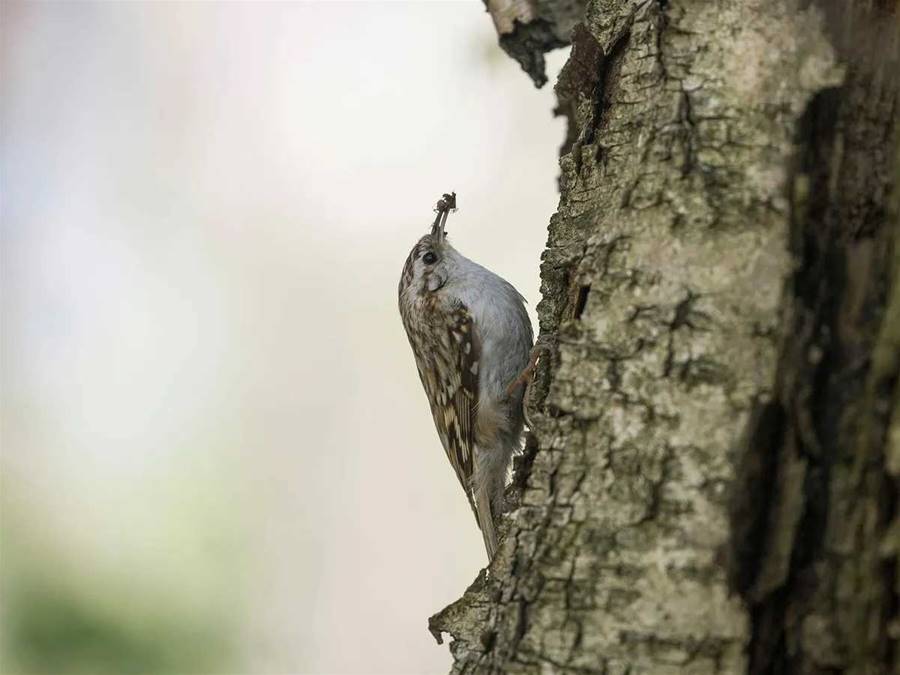
These tiny attractive birds spend most of their lives on trees and are superbly camouflaged to blend in with their surroundings. Their main colouring is mottled browns and black on their back and head and with mainly white underparts.
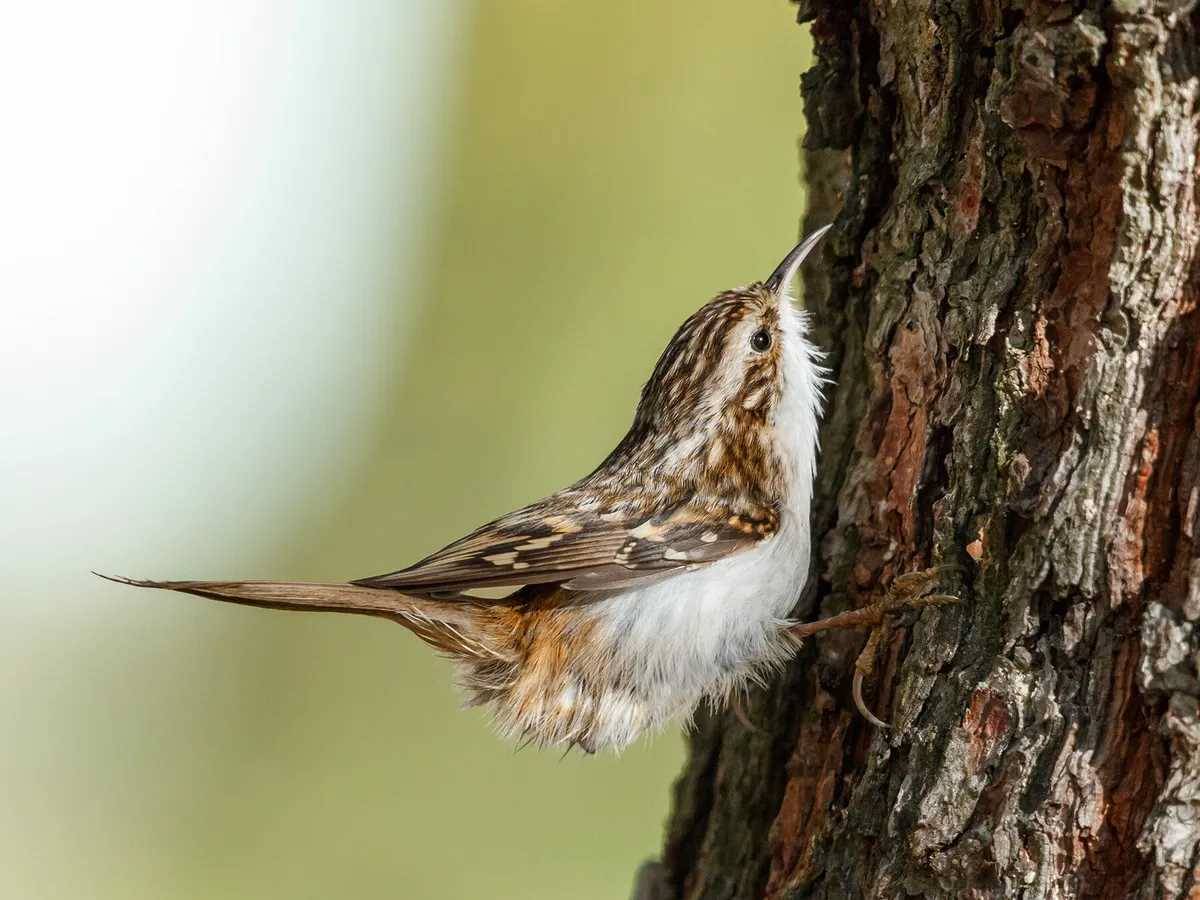
Close up of a Treecreeper
The treecreepers call is a long quiet and high pitched trill of 'srreee' which lowers in pitch at the end of each tweet.
The treecreepers home is also its kitchen! Its long thin pointed bill is used to wheedle out larvae, insects and spiders living in the tree bark and it is a very effective tool. In the winter they will also feed on seeds.
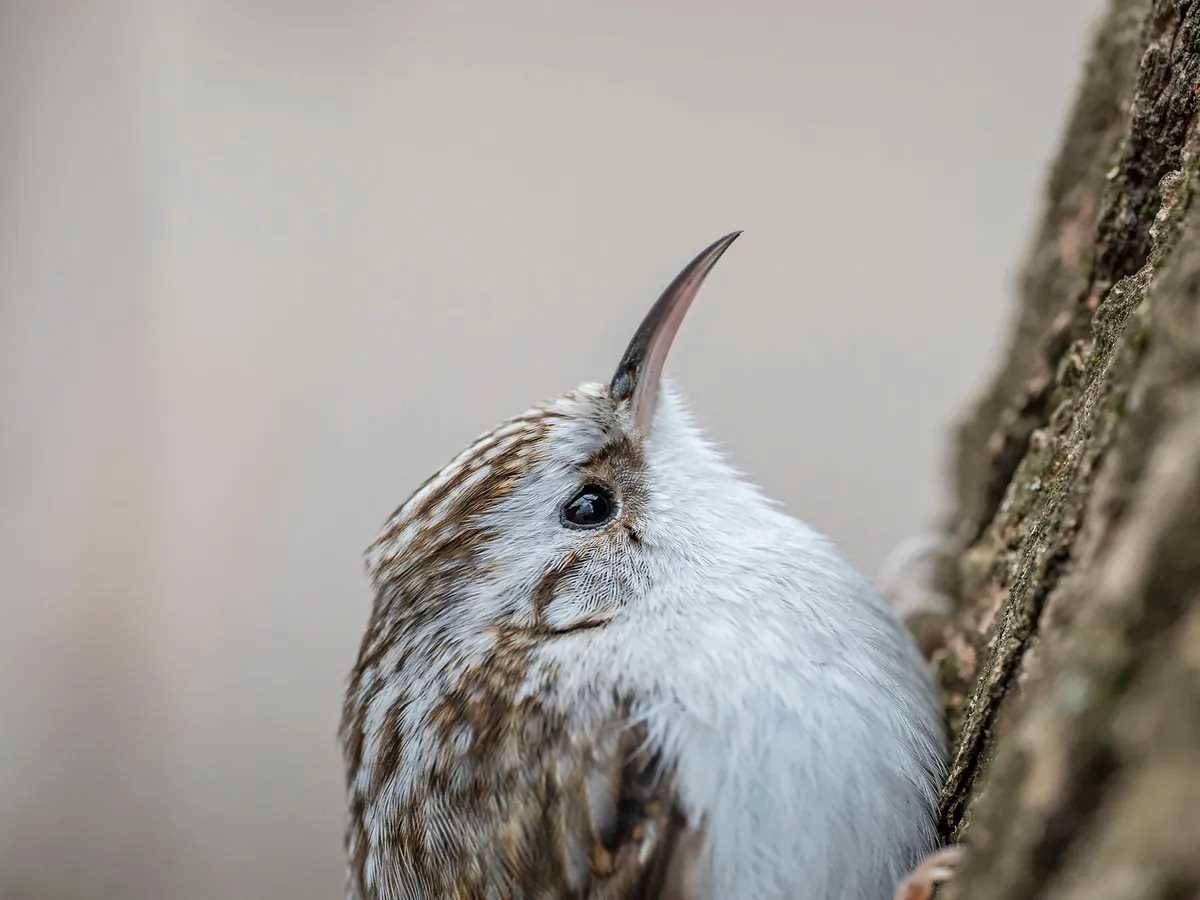
Treecreeper portrait
Treecreepers are UK residents and can be found across the kingdom apart from the northern isles of Scotland. They are solitary birds in the main who prefer deciduous woodland but are also found in conifer forests and occasionally wooded gardens. During the autumn and winter months they are often seen on the periphery of tit flocks.
Their camouflage can make these active little birds difficult to spot although once seen they are easy to identify. In size they resemble a small tit or wren but their slender bills coupled with their particularly long curved toes are a give away.
Treecreepers build their nests under protruding bark or behind ivy on the trunk of a tree.
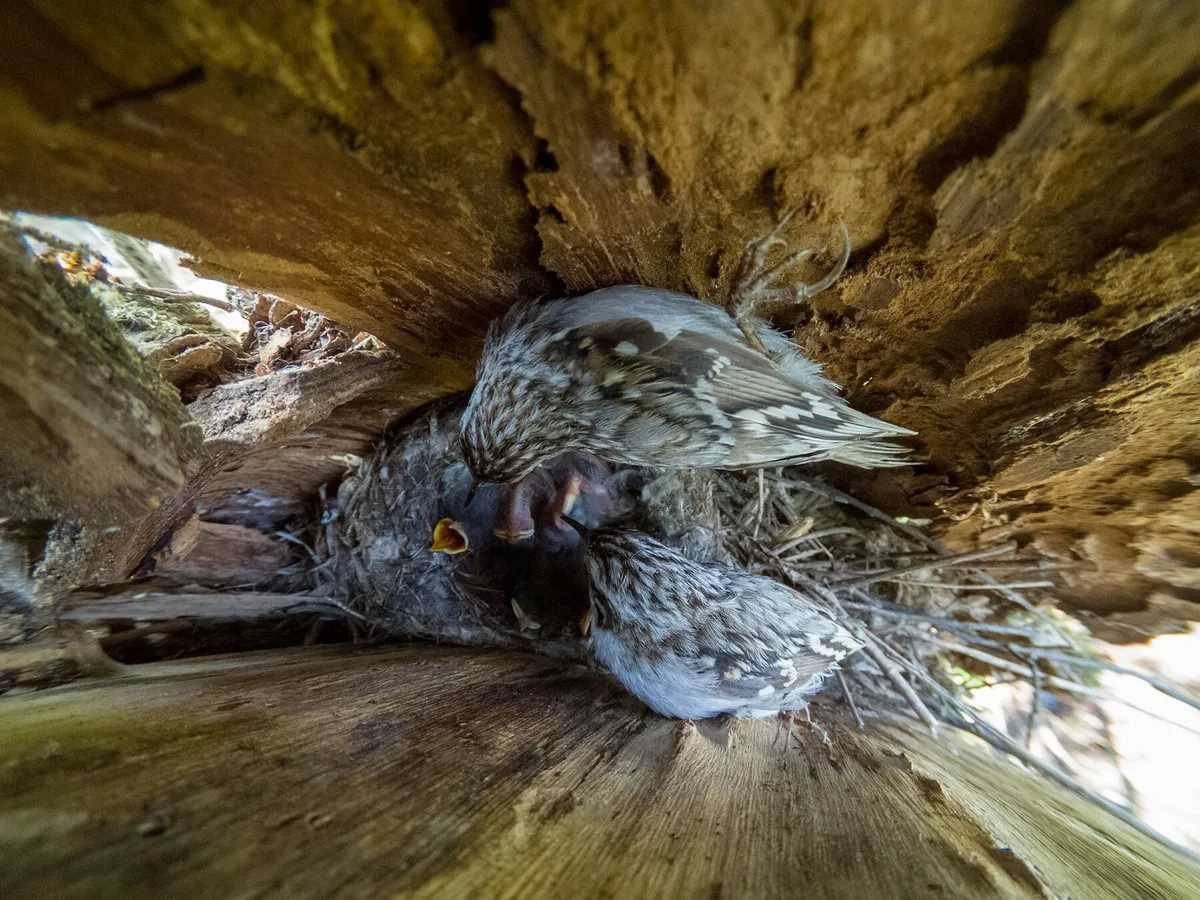
Treecreepers nest
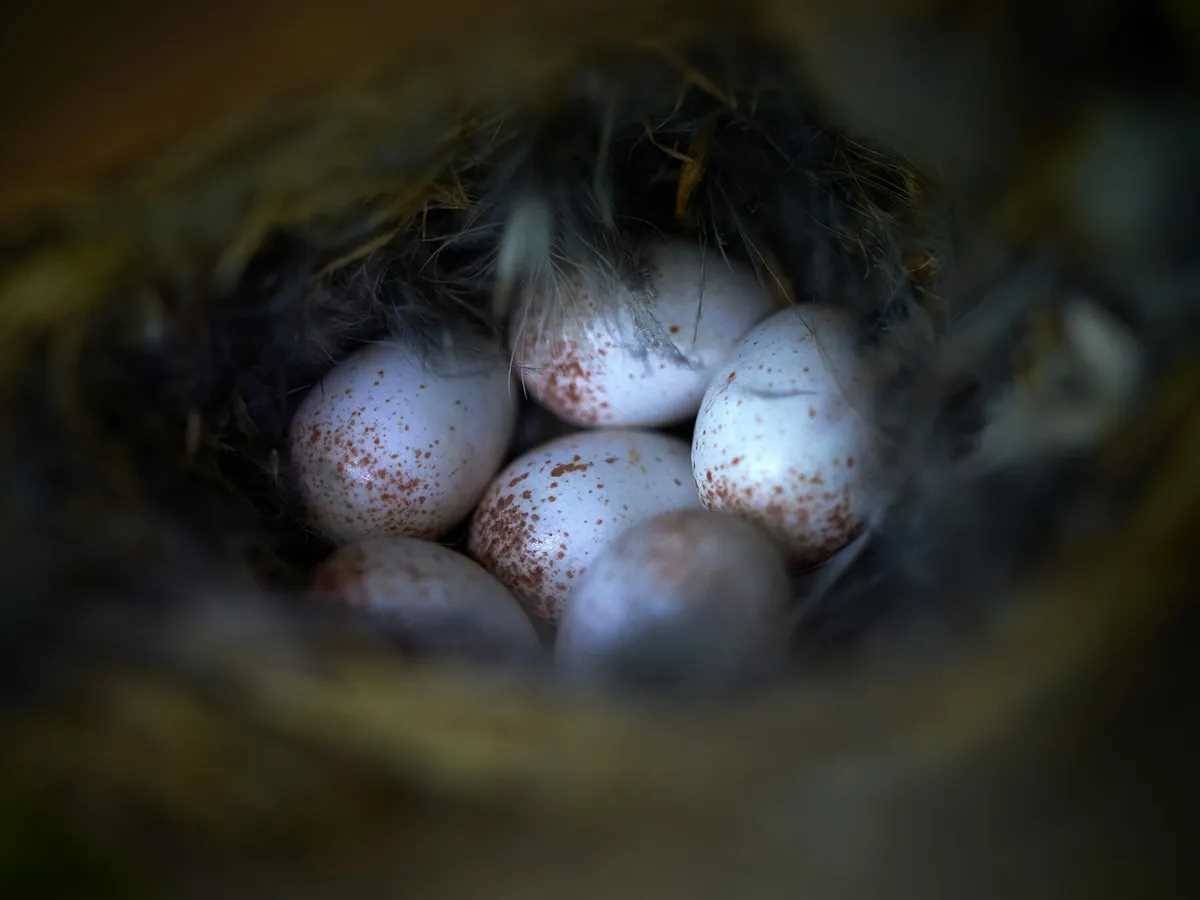
Treecreepers eggs
The lifespan of a treecreeper is two to three years.
